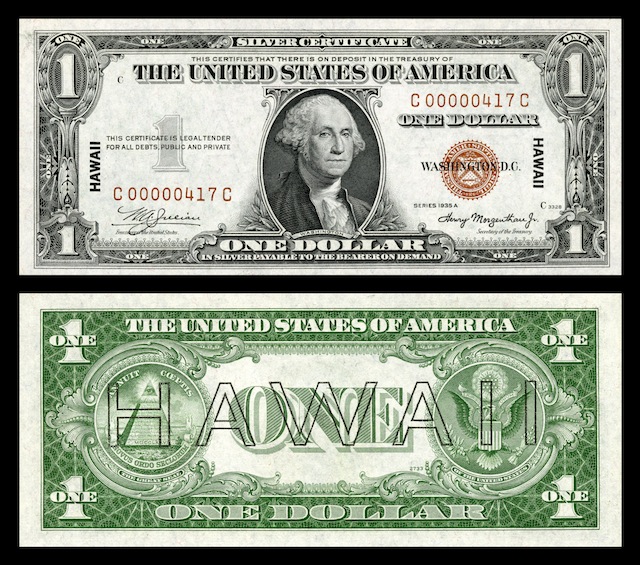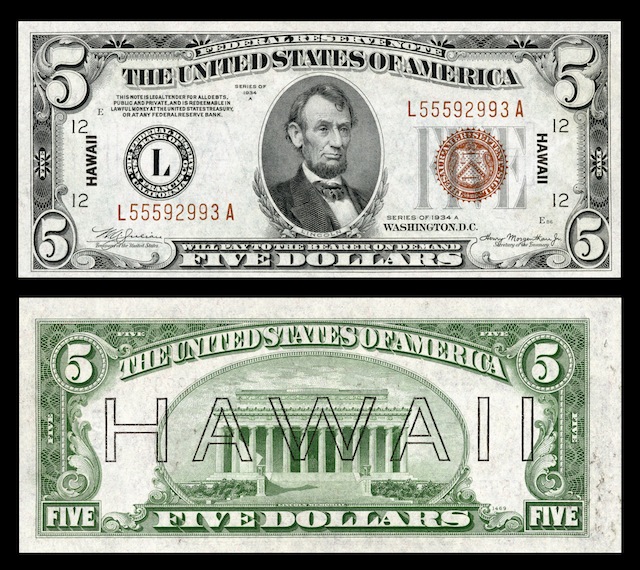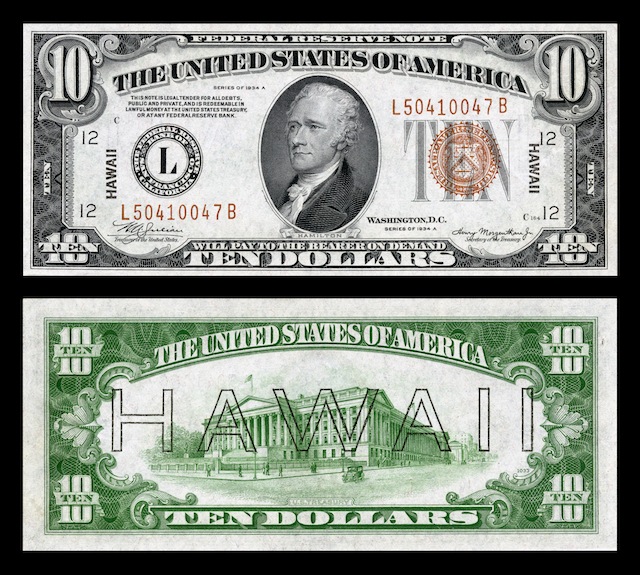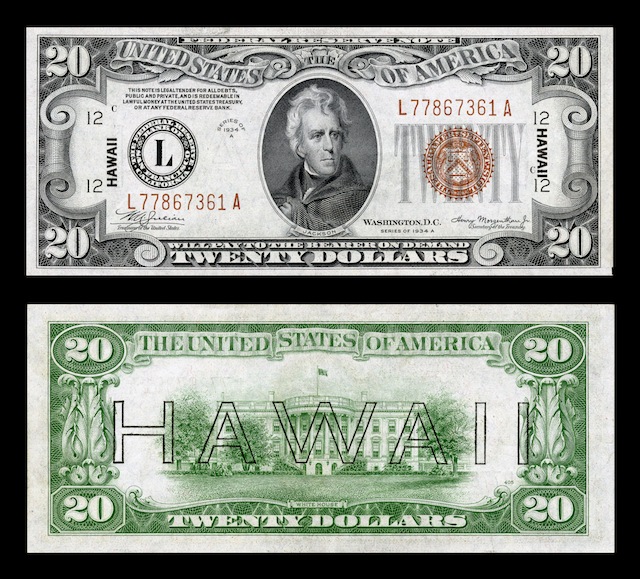When the Japanese attacked Pearl Harbor, the military brass quickly came to the realization that if the islands were to be captured, the invading army would have access to a large amount of United States banknotes, held by individual citizens, businesses, banks, and institutions, which they could then use throughout the world as there was no way to distinguish it from the rest of the currency stock. To provide an insurance policy against such an event, Delos Carleton Emmons, a Lieutenant General in the U.S. Army, issued an emergency order recalling all currency on the islands, and setting caps on the amount of currency a person or business could have in their ownership at any given time ($200 for individuals and $500 for businesses to cover payroll, respectively).
The Federal Reserve Bank in San Francisco began to kick into overdrive and issue a special run of brown-sealed banknotes with large print “HAWAII” on the reverse side to serve as a functioning working currency out in the Pacific. In the even the Japanese managed to gain control, the government would immediately render the banknotes worthless, limiting the Imperial Army’s loot to the physical land, improvements, and remaining salvageable items in and on Hawaii. Meanwhile, the purchasing power would have been shipped back home to the continental homeland.

Example of Hawaii Overprint Banknotes
National Numismatic Collection at the Smithsonian Institution

Example of Hawaii Overprint Banknotes
National Numismatic Collection at the Smithsonian Institution

Example of Hawaii Overprint Banknotes
National Numismatic Collection at the Smithsonian Institution

Example of Hawaii Overprint Banknotes
National Numismatic Collection at the Smithsonian Institution
If you ever see a Hawaii Overprint Banknote out in the wild, hang on to it because it might be worth some money. They are mostly locked up in collectors’ vaults, or destroyed, now, but they do surface from time to time. They were printed in $1, $5, $10, and $20 denominations. There were also some “star notes” (banknotes that have an * after the serial number to indicate it was a replacement for a damaged banknote), which are much more valuable.
The overprint notes remained the functioning currency permitted in Hawaii until October 21, 1944.
With a serious global conflict being a distant fantasy for nearly all domestic, non-military citizens alive today, sometimes I wonder if people are prepared were such an event to occur, again, as it inevitably will. War changes the rules of investment and property, and requires a different skill set. You need to know these things in the back of your mind. Currency devaluations happen. Nations invade nations. Is your life setup so that you at least have some sort of contingency plan and aren’t reacting at the last minute?
[mainbodyad]


